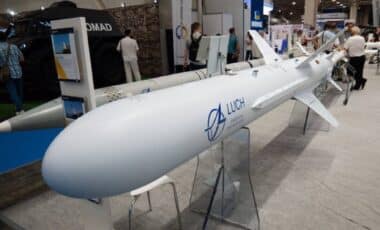President Donald Trump’s 2026 defense budget request aims to bolster missile and drone capabilities while reducing purchases of advanced fighter jets and cutting naval jobs. The $892.6 billion proposal reallocates military spending toward deterrence efforts in the Indo-Pacific and modernization of key systems, with less emphasis on traditional platforms like the F-35 and Navy ships.
The budget request, released Wednesday, marks a continuation of Trump’s effort to reshape U.S. military priorities. While total defense spending remains nearly flat compared to fiscal year 2025, the new proposal adjusts internal allocations significantly—favoring high-tech weaponry, pay raises for troops, and industrial base revitalization over expansion of current naval and air capabilities.
According to Reuters, the Pentagon’s portion of the national security budget stands at $848.3 billion. The broader package also includes homeland security funding and nuclear weapons-related activities under the Department of Energy. The administration says the realignment is intended to counter Chinese military developments and strengthen the defense industrial base.
‘It’s Going to Explode’: American Airlines Airbus A321 Makes Emergency Return After Engine Fire
Reduced Aircraft and Naval Procurement
The 2026 request includes a marked reduction in purchases of key defense platforms. Trump has asked for just 47 units of the F-35 fighter jet produced by Lockheed Martin, compared to 68 requested by former President Joe Biden for fiscal 2025. The Navy is set to receive only three warships under the current proposal, with additional vessels—such as a Virginia-class submarine by General Dynamics and Huntington Ingalls Industries—expected to be part of a separate bill.
Meanwhile, cost-saving measures extend to personnel and equipment. The Navy plans to cut 7,286 civilian positions, and the Pentagon intends to retire the entire fleet of 162 A-10 Warthogs, citing high operational costs. According to Reuters, these moves are part of a broader strategy to invest in more modern and cost-effective systems.
Greater Emphasis on Missile Programs
A major shift in the budget is the focus on advanced missile systems. The Air Force will continue funding for both the Joint Air-to-Surface Standoff Missile-Extended Range (JASSM-ER) and the Long-Range Anti-Ship Missile (LRASM), citing the strategic value of these long-range systems in the Pacific theater. All three of the highlighted missile systems—JASSM-ER, LRASM, and the newer Precision Strike Missile—are produced by Lockheed Martin.
As mentioned in the media source, the budget seeks fewer Precision Strike Missiles, which are intended to replace the Army’s ATACMS, currently used in Ukraine. This targeted investment aligns with a broader push toward modernizing munitions inventories, with a preference for long-range and precise systems.
Small Drones and Industrial Base Investments
The proposal significantly increases funding for small unmanned aircraft, incorporating lessons from the war in Ukraine where drones have demonstrated cost-effective combat utility. The emphasis on drone warfare reflects a growing consensus within the Pentagon about their expanding role in future conflicts.
Funding will also go toward audit-readiness and industrial base revitalization. According to a senior defense official cited by Reuters, the selected investments are structured to help the Pentagon achieve a full audit by the end of 2028. Additionally, while not part of the formal proposal, funding for Trump’s “Golden Dome” missile defense initiative is included in a separate request, and an initial $25 billion for that project has already been approved by the Republican-controlled House.
The proposed changes are part of a broader legislative package under consideration in Congress, known as the “One Big Beautiful Bill Act,” which encompasses a $150 billion defense package and reflects shifting priorities within the Republican Party.








